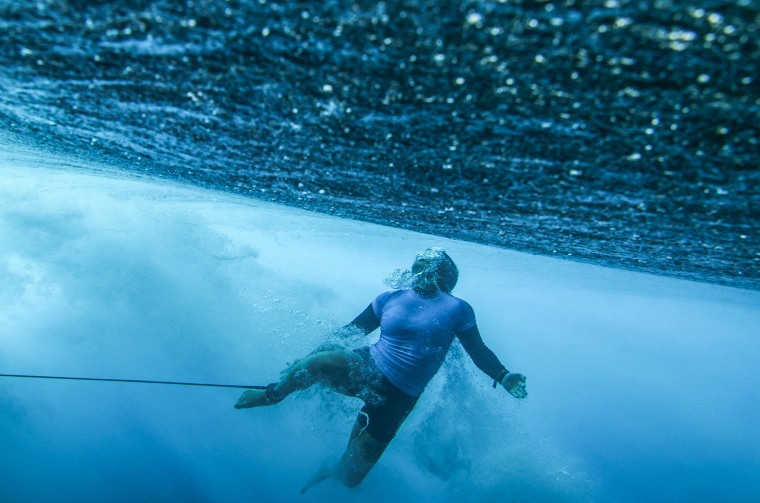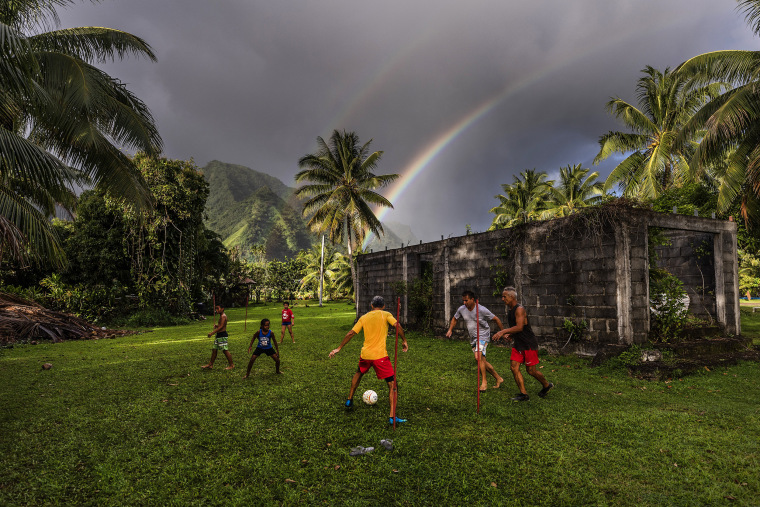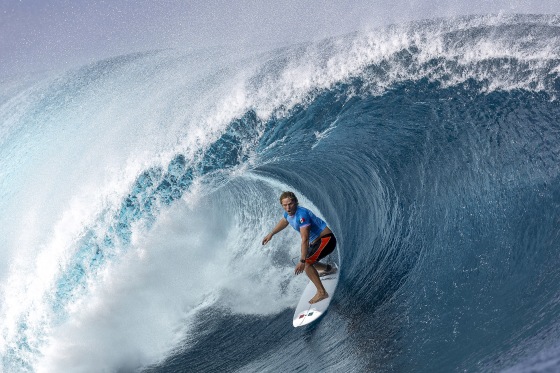Miles away from the site of the 2024 Paris Summer Games, Olympic surfers are riding one of the deadliest waves in the world in Teahupo’o, which translates to “the place of skulls.”
The Teahupo’o wave off the coast of the Tahitian village is considered the heaviest in the world and has already been the site of multiple injuries during this year’s competition. Previously considered insurmountable, the Teahupo’o wave has lived up to its deadly reputation — in 2000, Tahitian surfer Brice Taerea suffered neck and spinal injuries that ultimately killed him.

“It wasn’t even thought to be surfable, really. In the late ’80s, early ’90s, everyone was like, ‘Can we really do this?’” said Joe Turpel, NBC’s Olympic surfing commentator.
On Tuesday, the next rounds of the Olympic surfing competition were postponed due to heavy rain and strong winds for the second day in a row. “After four plus hours of ideal conditions at Teahupo’o, the wind has started to blow onshore and the rain is coming down sideways, turning the already dangerous surf into something markedly worse and wholly uncontestable,” read an official Olympics surfing communication.
The surf forecast determines the four days that surfers competing in the 2024 summer Games in Tahiti will take to the Teahupo’o wave. Only four days of a 10--day window will be allotted for the competition.
The forecast predicted good weather at the start of the competition window with windy surfing conditions later on — a forecast that has come true as competition days are pushed until later in the window.

The Teahupo’o wave’s swell is only one reason why it’s “not a wave for the faint-hearted,” as the Paris 2024 website called it. The island’s coastline is also bordered by a sharp and shallow reef that drops off suddenly into the ocean.
As a result, scoring at this year’s Olympic surfing competition won’t be about the tricks that surfers typically perform on other waves. Surfers told The Wall Street Journal that it’s about simply committing to the wave.

“It’s not the time to be like, ‘Oh, God…I don’t know if this is going to work out for me,’” Jessi Miley-Dyer, a pro surfer and commissioner for the World Surf League, told the Journal. “You’ve got to paddle into it, then pull your head down and go, ‘Okay, I’m going to make this, and this is going to be the ride of my life.’”
While the Teahupo’o wave poses a daunting challenge to surfers who flock to the Tahitian village, residents of Teahupo’o have faced a decadeslong environmental danger. In 1974, a radioactive cloud from a French nuclear weapon test floated over Teahupo’o, exposing villagers to radiation that causes cancer.

Across French Polynesia, 200 nuclear tests were conducted by French scientists from 1966 to 1996, according to reporting by The New York Times. “I am happy that we have the Olympic surfing, and I am proud that everyone in the world will know Teahupo’o,” Mayor Roniu Tupana Poareu of Teahupo’o told the Times. “But sometimes, when I see the suffering of my family, I hate France.”
For more from NBC Asian America, sign up for our weekly newsletter.
